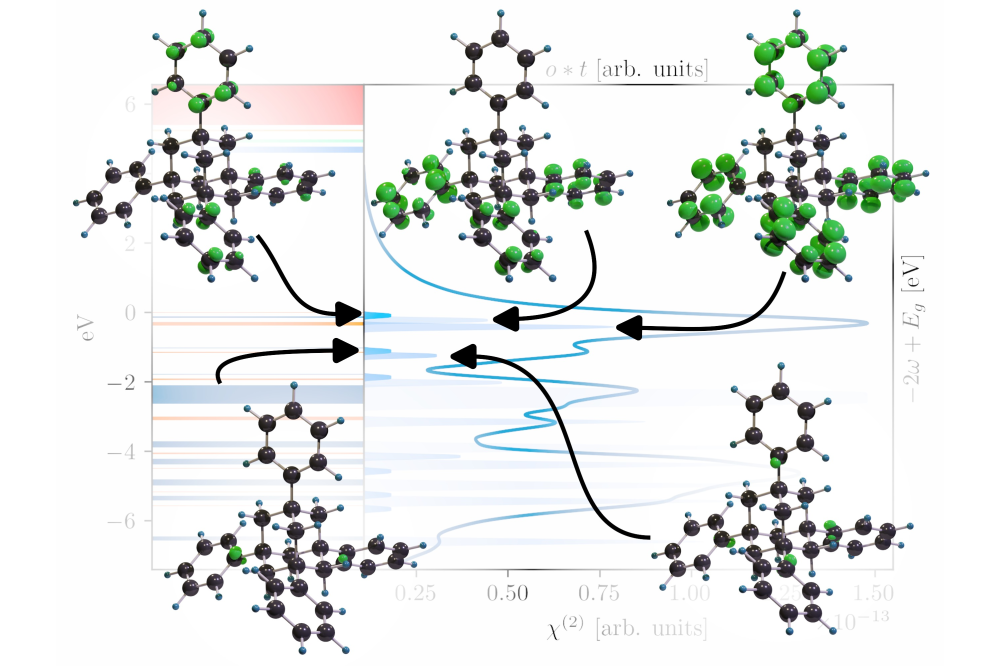Optical Response of (Hetero)Adamantine Clusters
Einleitung
White light generation (WLG) is one of the most puzzling and exciting topics in nonlinear optics. Strictly speaking, WLG is the common denomination of the extreme spectral broadening of a light source propagating through a nonlinear medium, technically referred to as supercontinuum generation. The latter is the combined effect of a multitude of nonlinear optical mechanisms which sum up to extremely broad spectra resembling white light. White light sources, indispensable in many applications ranging from medicine to illumination, are rare and expensive. Recently, special molecular clusters based on the (hetero)adamantane structure were shown to emit highly directional white light upon irradiation with a continuous wave infrared laser. The optical effect and its origin can be investigated by atomistic calculations, e.g., in the framework of the density functional theory.
Methoden
Our main tool for atomistic modelling of the nonlinear optical properties [1] is the software package YAMBO. It implements the time-dependent density functional theory, which allows for the accurate prediction of fundamental properties such as band gaps and spectroscopic signatures of semiconductors. YAMBO requires a previously computed electronic structure, which we calculate at the density functional theory level with one of the most used planewave codes, Quantum ESPRESSO. The latter is a computer program for first principles atomic scale materials modelling, e.g. electronic structure calculations and quantummechanical molecular dynamics. It offers efficient iterative matrix diagonalization techniques and highly customizable parallelization schemes. In particular, parallelization over bands, parallelization over plane wave coefficients, as well as parallelization over k-points can be used at the same time on massively parallel systems in order to obtain high computational efficiency.
Ergebnisse
Our calculations have contributed to identify many of the prerequisites leading to the white light emission, including the presence of delocalized π-orbitals or an amorphous atomic
structure [2,3]. Moreover, some of the mechanisms leading to the amorphous habitus of halogen substituted tetraphenyls have been rationalized [4]. The calculation of the nonlinear optical response demonstrated that the magnitude of the spatial overlap between occupied and unoccupied orbitals separated by a given energy correlates with the intensity of the nonlinear optical activity at that energy (see Figure 1). This allows to estimate the contribution of specific sub-structures to the optical response. In the case of (hetero)adamantane-tetraphenyls, main contribution is due to the substituents. The optical response of larger and complex cluster structure is modeled via cluster dimers and trimers [5].
Diskussion
Despite the recent progress in our understanding of the optical response of the (hetero)adamantane molecular clusters, many aspects have still to be investigated. Fundamental questions regarding the prerequisites for the optical nonlinearities such as
order/disorder and chemical composition are currently explored. The role of the cluster core and the correlation of different recombination mechanisms are in the focus of the forthcoming investigations. Starting with structural data, our project provides the optical response of the investigated systems, thus helping the interpretation of the corresponding measurements and inspiring the synthetization of new compounds with tailored optical properties. Indeed, the knowledge of the intertwinement between structural and optical properties can be used to tailor materials optimized for specific applications.




